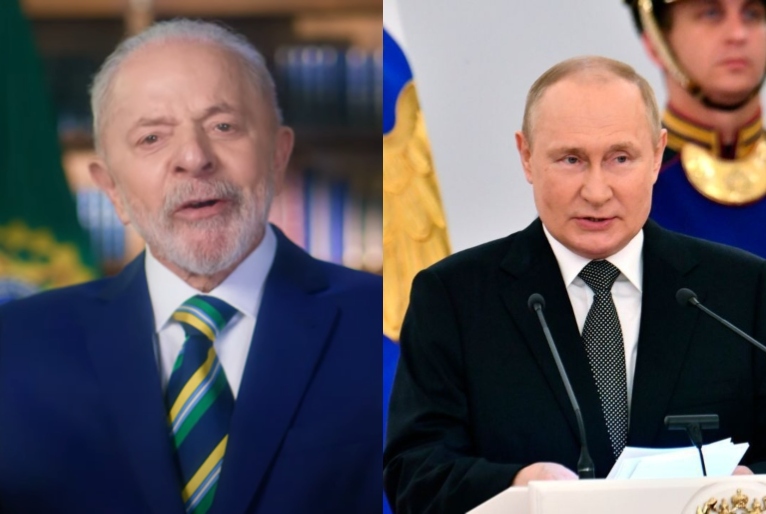
Between May 8 and 13, President Luiz Inacio Lula da Silva makes official visits to Russia and China, with agendas aimed at intensifying bilateral relations and promoting Brazilian action in a multipolar international context.
Travel include meetings with heads of state, participation in multilateral forums and the signing of agreements in various strategic areas.
From May 8th to 10th, Lula remains in Moscow, where he participates in the celebrations for the 80th anniversary of the end of World War II. During his stay, a meeting with Russian President Vladimir Putin is foreseen, as well as the signing of agreements focused on science and technology cooperation.
“Brazil is a country that seeks peace, which has a dialogue with Russia on various matters. It has an important business relationship with Russia of agribusiness products, and we want to balance our trade scale,” said Ambassador Eduardo Saboia, Secretary of Asia and Pacific of the Ministry of Foreign Affairs.
Diplomatic relations between Brazil and Russia date back to 1828, but intensified from the 1980s. In 2002, the two countries raised their interaction with strategic partnership level.
Since then, they have maintained frequent interlocution at presidential and ministerial levels, as well as articulating joint positions in multilateral forums such as the United Nations, G20 and BRICS.
In the first three months of 2025, trade between Brazil and Russia reached US $ 12.4 billion. Brazil exported US $ 1.45 billion – highlighting soy, beef, coffee and tobacco – while imports totaled US $ 10.9 billion, composed mostly by fuel and fertilizer oils. Russia currently appears as the fifth largest product supplier to Brazil.
After the passage through Moscow, Lula goes to Beijing, where he is in schedule between May 12 and 13. This will be the president’s fourth official visit to China.
Commitments related to the IV China-Celac (Latin American and Caribbean States Community) are planned, as well as the signing of new bilateral agreements. The areas covered include agriculture, infrastructure, energy, science, technology, culture, health and education.
“The magnitude of the relationship with China is known. From a commercial point of view, our exports to China are superior to our sales to the United States and the European Union. Brazil is the seventh main supplier of China. So it’s a time to explore new cooperation aspects,” said Savoy.
The ambassador also reported that there are 16 protocols and advertisements agreed between countries and 32 in negotiation. These instruments address points of convergence between Brazilian and Chinese development plans.
“This is certainly on the agenda of this visit, as is the converging view of the two countries in the defense of multilateralism, defense of global governance reform and support for peaceful functions,” he added.
The China-Celac Forum, created more than a decade ago, has served as an approximation mechanism between China and the Latin American and Caribbean countries. According to ambassador Gisela Padovan, secretary of Latin America and Caribbean of Itamaraty, Celac represents a relevant instrument of regional articulation.
“I need to emphasize the importance of Celac for Brazil and the importance that President Lula attributes to regional integration, so much so that the first international act of his government was exactly participating in the summit in Buenos Aires in 2023 and returning to Celac, which we had left in 2019,” he said.
During the Forum, a joint statement and action plan for the period 2025 to 2027 are expected to be completed. Proposals cover topics such as digital economy, energy transition, science and technology, risk management, health, food safety and investments.
In the commercial field, China remains the main partner in Brazil. Between January and March 2025, bilateral exchange reached US $ 38.8 billion. Brazilian exports totaled US $ 19.8 billion, especially gross oil, soy and iron ore. Imports totaled US $ 19 billion, composed mainly of vessels, telecommunications equipment and electronic components.
Since 2009, China occupies the position of the largest commercial partner in Brazil and has been among the largest foreign investors in the country, operating in sectors such as energy, oil, transportation, telecommunications and financial services.
Lula’s previous visit to China in April 2023 resulted in the signing of the widest joint statement ever signed between the two countries. The commitments covered topics such as food security, space cooperation and climate change.
In the environmental level, a joint statement on the combat of climate change was signed, as well as the creation of a specific subcommittee within the Sino-Brazilian Commission of High Level of Concertation and Cooperation (COSBAN).
By maintaining and expanding dialogue with Russia and China, the Brazilian government seeks to consolidate its international presence focused on multilateral cooperation and the defense of a global order based on equality between countries.
The agenda includes initiatives aimed at reforming international governance, sustainable development and strengthening Brazil’s strategic insertion in global trade, science and technology networks.
Source: https://www.ocafezinho.com/2025/05/07/lula-visita-russia-e-china-para-ampliar-parcerias-e-reforcar-papel-do-brasil-no-cenario-multipolar/

